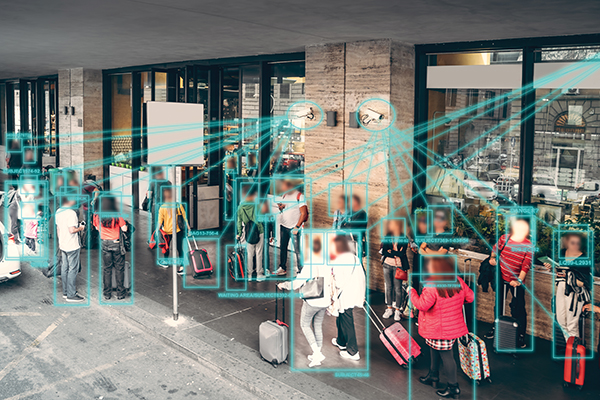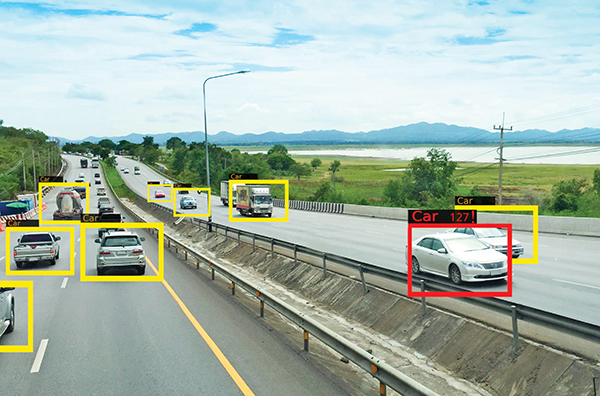
Tech disruption has become commonplace in every facet of life and commerce. We are bombarded daily by announcements of new capabilities in generative artificial intelligence (AI), cybersecurity and data-driven analytics. Have we now reached the point where we can ask Chat GPT to choose the optimal location for our next manufacturing plant? Do we no longer require a human experience to ensure that intangibles and key insights into market conditions and trends are not lost during location evaluation and site selection?
The probable answer is “no” or “not yet.” However, with every headline, companies expect increasing technological sophistication from their partners, including their site selection consultants. Like most industries, site selection has benefitted from advances in technology (many spurred by the pandemic particularly from remote collaboration tools like video conferencing and project management platforms.” We can now do more with less travel, facilitating scheduling and allowing broader participation by client team members. Drones are increasingly giving us better access to visual inspections of sites, before and during fieldwork. We’re even beginning to see virtual reality (VR) and augmented reality (AR) tools used for introductory virtual visits, though this is still far from the norm.
The impact of emerging technologies on site selection is multi-faceted, driving a shift towards more data-driven, sustainable and tech-enabled decision-making. As businesses continue to evolve, those that adapt to these technological advancements could have a competitive edge in selecting the most strategic locations for their operations.
Artificial Intelligence (AI)

In its most recent survey on the topic, the Site Selectors Guild concluded the anticipated benefits of AI are numerous, “including greater efficiencies through the automation of tasks, enhanced decision-making and motivating an innovation mindset.” However, the report also warns of the potential pitfalls of sole reliance on AI, especially in the world of site selection, where a poor choice has dire consequences and relying blindly on online information is dangerous.
The Site Selectors Guild tested three AI platforms on a basic site selection inquiry. The result? There were commonalities among the shortlisted locations recommended by the platforms, but there were also deviations, with recommendations varying according to which AI platform was used. This was perhaps to be expected. The AI results also differed from those of the time-tested “human” approach. One might be tempted to wonder whether AI knows something the human site selector doesn’t, but the inconsistencies in the AI responses disabuse us of that notion, as asking the same platform the same question multiple times yielded multiple versions of the shortlist.
As site selectors, we’re eager to use AI to achieve greater efficiencies, but there are four reasons we do not worry about these current applications taking over our core jobs anytime soon:
Data limitations. As past trends continue and evolve, more of the data metrics we use will be turned over to computers – and that will be a welcome assist, but there will be limitations for the foreseeable future:
• Location variables are often too customized and nuanced, and a detailed, online record of past and recent location decision-making is sparse at best. AI simply does not have access to the needed information, as it doesn’t exist in conventional databases. Nor has AI yet been trained to understand which tax rate, utility rate or industry classification to choose based on project parameters. Finally, AI cannot yet pick up the phone, have a conversation and make a decision, as a human might.
• All data has limitations; site selection consultants study these limitations and, by applying their experience, know how to avoid being misled. For example, Census and Bureau of Labor Statistics data is sometimes “suppressed” and not shared for a given market due to disclosure limitations. Further, building apples-to-apples comparisons of data across geographies of varying sizes and market dynamics is both a science and an art, honed by site selection consultants over years of experience. Until and unless AI tools are sufficiently trained, they will lack the judgement necessary to reliably interpret data relative to those nuances. Further concerns exist over artificial intelligence’s susceptibility to efforts to bias and/or manipulate online information in ways which could influence results.
Fieldwork assessments. Computers are not good at the subjective assessments and interactive dialogues that comprise fieldwork. They cannot assess the business friendliness of a community or work with local zoning authorities and neighborhood groups to overcome potentially fatal project roadblocks. They are currently unable to predict whether relocating staff will enjoy a warm welcome in their new destination.
Recognizing opportunities to change the facts. AI cannot yet assess and predict the possibility of changing the facts about a location. It cannot, for example, recognize the potential to negotiate a new rate class for a large power user, or the likelihood that a permit could be expedited. Very few sites are perfect from the outset. Perfection requires vision, as well as collaboration and negotiation with local leadership. Site selection consultants are experienced in managing these considerations, and we have the industry contacts and economic development relationships to explore and quickly determine what’s possible.
Consensus building. Even the most rudimentary location algorithms are capable of scoring and ranking a set of competing destination choices. However, they are presently unable to facilitate consensus within the company’s management team without the intervention of a human site selector or similar advisor. The perspective of the CEO will inevitably be different than that of the HR officer, the CIO, head of operations or the CFO, yet each perspective needs to be considered and the internal political context must be acknowledged before a good location decision can be made.
Site selection is about much more than data-driven outputs. It’s about making multi-faceted, strategic decisions that will impact a company’s future performance for many years. Advising companies on these complex decisions is our role as site selection consultants.
Geographic Information System

The Geographic Information Systems is an essential tool for all site selectors, helping us create, manage, analyze and map all facets of data while helping users understand patterns, relationships and geographic context. We use it to research and analyze potential markets, evaluate sites and construct data visualization tools to provide clients with vast amounts of data in concise, actionable formats.
The variables driving a location decision include demographics; workforce migration patterns, environmental considerations, utility infrastructure, transportation networks for people and products, natural disaster risk assessments, proximity to industry clusters, customers, suppliers and vendors, time zones, weather conditions, site characteristics and conditions, zoning, area amenities and a host of other factors. These very different data points have one thing in common: they are each defined by a geographic area. The real value of GIS is its ability to seamlessly organize, then graphically depict, extensive information about a defined location, allowing us (and our clients) to understand more about a potential location faster and easier than with text and numbers alone.
Take, for example the property visualized below. While the table on the left conveys a few basic facts about the site’s assets and constraints, the GIS depiction on the right quickly reveals how much of the site may be useable and what portions are impacted by wetlands and floodplain. While the table indicates a rail spur is 1.5 miles away, the GIS depiction illustrates the orientation of the spur relative to the site and the nature of the geography to be traversed if a connecting spur were to be constructed. The map also shows us the best access point(s) to the nearby interstate highway. By overlaying other mapped elements, such as topography or zoning maps, we can quickly learn still more.
Another example of the power of GIS is its ability to aggregate and filter population, employment and worker migration data across many counties in multiple states to identify the most suitable labor markets for a project.
Not only does GIS enable us to easily generate these areas and associated charts, graphs and statistics, it removes the need to do the analysis by hand, thereby removing varying levels of user error or bias. Decisions and solutions are better informed and reached faster, and with greater clarity and confidence, when assisted by GIS.
Site Suitability Analysis within a GIS platform provides the ability to efficiently combine variables, establish minimum criteria, adjust weightings between variables and generate results and associated charts, graphs and statistics dramatically faster than performing the calculations by hand. This enables location decision makers to adhere to project schedules while also performing “what if” sensitivity tests to understand how changing priorities might alter location rankings.
Visualizing Site Selection
Typically, visualizing data and visualizing a site require very different technologies. In the world of site selection, however, they go hand-in-hand to help project teams evaluate potential locations.
Site (location) visualization. Take, for example, the power we now have to perform site reconnaissance remotely, via platforms like ESRI, Google Earth and Google Maps or with drone photography and videography. Each of these new technologies is exceptionally affordable and easily deployed, and the benefits can be immediate. In one example, the day after a nearby hurricane caused flooding in some areas, economic developers in Brunswick, Georgia flew a drone over a short-listed site to prove the property remained dry. Also, many property owners and economic developers make effective use of drone footage in their marketing materials. A few examples include Stark Farms in Ohio, Platte County in Kansas Terre Haute Development in Louisiana; Northwest Manatee Skyway Industrial Park in Florida and the Madison County Megasite in Mississippi.
As these technologies continue to improve, they are enabling site selectors to perform ever more meaningful evaluations prior to fieldwork and are having a direct and positive impact on project budgets and timelines. While on-the-ground fieldwork remains essential to site selection, there is little doubt that the adoption of these virtual reality technologies will become even more prevalent.
Data visualization. On the previous page we discussed how maps and illustrative exhibits make site information more intuitive and enable more efficient evaluation. However, data visualization tools are not limited to GIS. Site selectors now have at their disposal everything from Excel (though its main purpose remains data calculation) to interactive platforms such as Microsoft PowerBi and Tableau that can create dynamic dashboards and visualizations that allow users to engage directly with data without being overwhelming.
The most powerful application of these interactive applications, however, is their ability to enable client teams to conduct sensitivity tests of the various stated priorities that are driving a site selection decision. For example, a manufacturer reliant on imports might wish to see a re-ranking of potential locations if the emergence of a domestic supplier reduced the need to be close to a deepwater port.
The Big Picture
The integration of emerging technologies is changing the location selection process for businesses by delivering data-driven insights and advanced analytics that can make good location decisions quicker and more efficient. Although technology plays a key role in optimizing the process, and will no doubt grow in importance, human oversight, interpretation and intervention will, for the foreseeable future, ensure a thorough understanding of the context, nuances and unique considerations of each site — things that technology alone can’t always capture. Without human capacity to interpret and optimize the features of the technology, the outcome is unlikely to produce the best results for the business. A balance between technological innovation and human judgment remains essential for selecting the best location. T&ID


